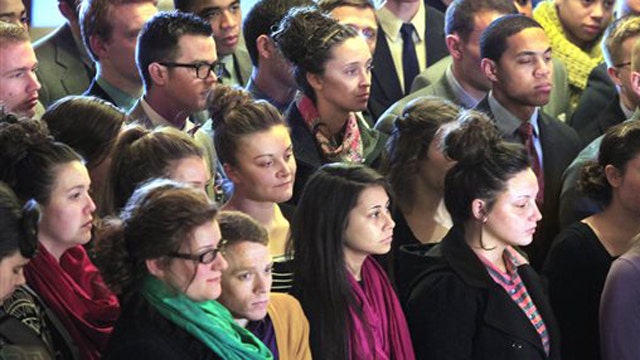When the Revered DeForest Soaries attends gatherings of his fellow leaders in the Black Church, he often finds himself the youngest man in the room. Soaries, the senior pastor at First Baptist Church of Lincoln Gardens in Somerset, New Jersey, is 62-years-old. The graying of the church leadership (both among the professional clergy and laypeople) started to really concern him a few years ago, he tells me, when he learned that “the youth director for the National Baptist Convention was 80-years-old.”
To address the problem, he decided a few years ago to fire his wife. Donna Soaries was the head of the annual women’s retreat ministry at Lincoln Gardens. Attendance at the retreat often tops one thousand people, which is why organizing it takes up much of the year and why being in charge of it is considered a great honor and responsibility in the congregation. But Pastor Soaries tells me that his wife had been in the role for 16 years, and many of her friends had been serving on the committee for a similar length of time.
So he asked his wife and the other ladies to please step aside and let some younger women take over. Some of the church’s lay leaders, he told me, had begun to “cling to their positions. It became their personal property. They were intimidated by the idea that they might be displaced.”
[pullquote]
Soaries’s congregation is not alone. As Mark Chaves, a professor at Duke University, has written, “People in the pews are getting older.” In the 1970s, people who attended church frequently were on average three years older than the general population. In 2008, there was a five-year gap. We have reached a point where “the average churchgoing adult in the United States is now 50-years-old.”
But if religious institutions are ever going to get young adults to return, the leadership will have to figure out a way to make them feel like their time and talents are needed. It is not uncommon to hear boomers in church complain about the self-absorbed millennials who don’t support their religious communities. As a Pew Survey famously found in 2012, a third of American adults under the age of thirty claimed no religious affiliation,
These “emerging adults” seem to older generations like overgrown teenagers -- putting off marriage and family, living in parents’ basements, unable to commit to even a single social media outlet. But there is a chicken-and-egg element to this problem. The older members of congregations see these 20-somethings as children because they don’t take on responsibility. But as the older members lead longer healthier lives, they refuse to hand over any.
Pastor Soaries is not the only one bucking this trend, though. Corey Duckworth, the bishop of a Mormon congregation in American Fork, Utah, says, “the whole idea of delayed adolescence is very much real. You have people in their twenties who are still playing video games and, you know, engaging in activities that aren’t particularly productive.” But rather than accepting this situation, the LDS church has created (and in recent years expanded) the number of “Young Single Adult” wards, congregations that are made up and run entirely by men and women under the age of 30. Whether it is collecting and keeping track of the tithes or directing Bible studies or spearheading community service initiatives, these young adults have shown themselves to be perfectly capable.
Many of the men and women I interviewed at YSAs (both in Utah and Manhattan) did find it strange at first to see their peers in leadership roles. One young woman told me she was surprised to see a guy she grew up with teaching religious education. “I remember when were in Sunday school together and he did not pay attention,” she jokes. “It’s funny, but at the same time I think it’s just that we’re all growing up.”
Perhaps that realization is the one that the church leadership is looking for. Even if you still think of yourself as a teenager, watching your friends take on positions of responsibility or taking them on yourself helps you see yourself in a more mature light.
This same dynamic seems to be at work in Moishe Houses, dozens of homes across the world that are supposed to serve as “hubs” of Judaism, particularly for those between the ages of 21 and 32. In return for a rent subsidy, the residents of the house (who can live in one for up to four years) agree to provide a certain number of Jewish activities, holiday celebrations, service projects and educational opportunities for the community.
Moishe Houses are more than just a post-college dorm. Their residents represent religious ideas and bring religious traditions to others.
One young woman I interviewed at a Moishe House in New York described how she always helped organize events in her Jewish youth group but when she finished high school, it seemed as if her synagogue didn’t really have a role for her. When the opportunity to live in a Moishe House became available, she jumped at the chance. “This was a new way for us to be Jewish leaders.”
There are plenty of demographic and cultural reasons why millennials aren’t active participants in American religious life. But before religious institutions write them off as self-centered children, maybe someone should ask for their help.

